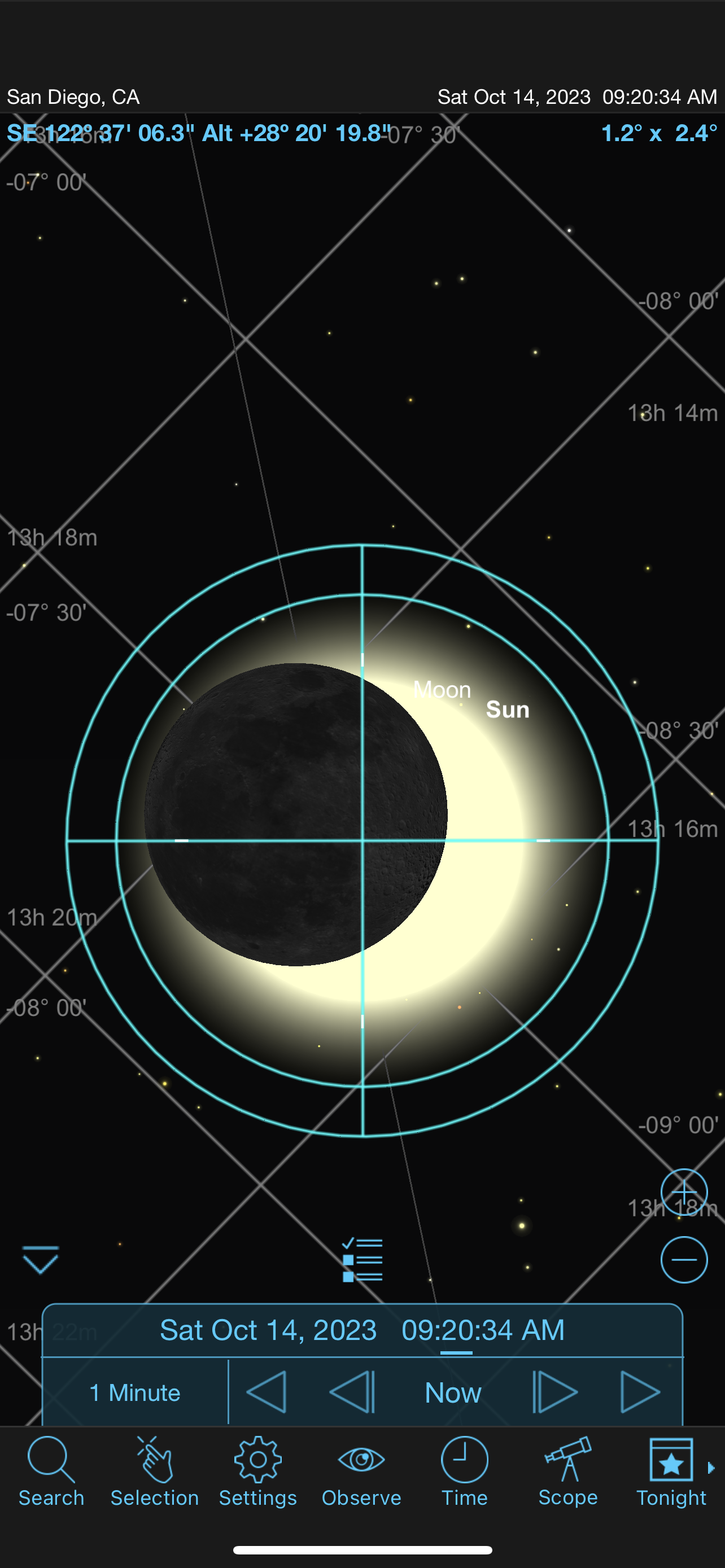- Details
- Category: Events
Solar Eclipse: Saturday, October 14, 2023
Early morning West Coast, midday East Coast:
-
- San Diego: begins 8:09am PDT, maxes 9:26am, ends 10:52am
- Orlando: begins 11:52am EDT, maxes 1:26pm, ends 3:02pm
- check your city at: https://www.timeanddate.com/eclipse/annular-solar-eclipse.html
Unless you live along a path between Eugene, Oregon and Austin, TX, the October 14, 2023 eclipse will be a fairly common, decent partial eclipse.
It is still definitely worth a look, especially the closer you are to that path. San Diego gets the worst coverage west of the diagonal path - about 67% coverage - Florida gets 55%. The diagonal passing through Chicago gets 40%, New York 20%
Note: Never look at the sun without proper eye protection. If you're using unprotected binoculars or telescopes you will experience INSTANT permanent eye damage.
Eye protection information is here: Looking at the Sun - Precautions
- Note that amazon will deliver Eclipse Glasses very quickly (overnight in many cases) for a couple dollars / pair.
There's nothing like a Total Solar Eclipse, but a Partial is still worth seeing. What's the visceral/emotional difference? The Eclipse Experience - Partial vs Total
Here's the max in San Diego:

Note that eclipses are rare, but observing the sun - safely - can be an everyday activity. The sun actually has visible "weather" that changes from day to day. Solar!
- Details
- Category: Events
What nights are the visible planets actually visible?
They're visible almost every day of the year.
While you'll often hear that one planet or another is visible for some limited period of time, it's generally just an "extra good" time to view them.
You'll often hear that a particular constellation or celestial object is a "Spring Constellation" or "Summer Target".
That seasonal designation just means that it's visible in the summer sky after sunset - the time when most casual observers are likely under the sky.
We should all understand that if the sun were not in the sky, we'd see 360 degrees of stars and planets. It's up there all the time.
The sun washes out the whole sky half the day, right? So we should only see have the sky on any give 24-hour day, right?
Actually, consider what happens when the sun goes down and it gets (mostly dark):
If you look up, you see half the sky. Now stand there for the next eight hours, what are you going to see? You are going to see a whole bunch of new sky rise. 1/2 sky plus 1/3 sky (8 hrs / 24 hrs = 1/3 rotation) = 5/6 of the sky. Depending on your lattitude and the season, you'll have a little more or less time before sunset: you can see most of the sky on any given night.
So to see any particular object, you just need to know what time it's in the sky and decide whether you're up for it.